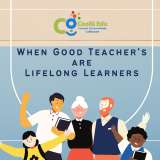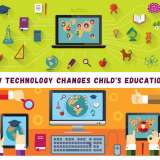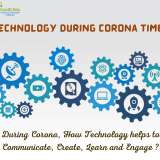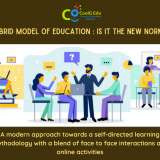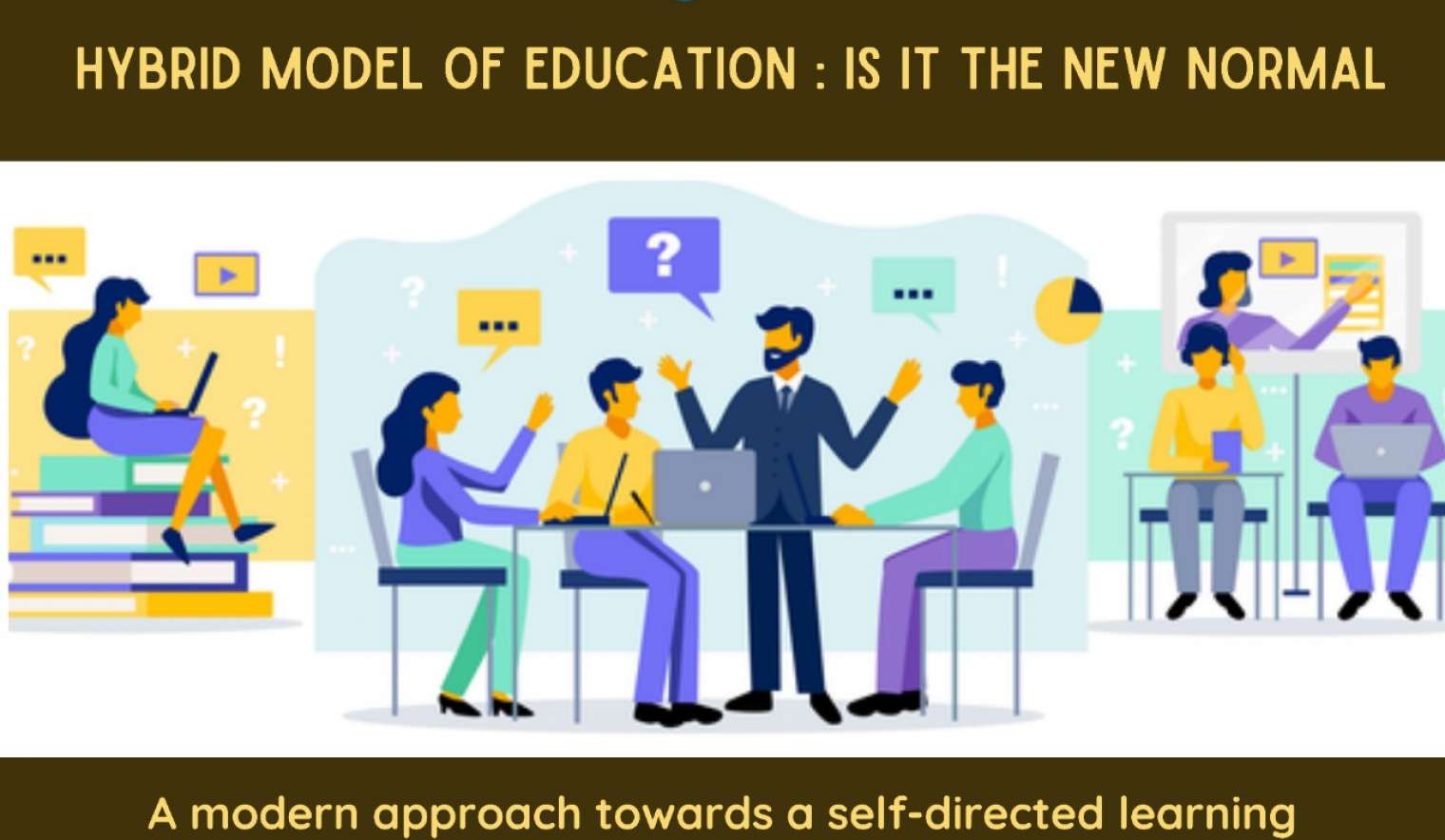
Hybrid Model of Education: Is it the New Normal
More personalized, more engaging, more collaborative
A modern approach towards a self-directed learning methodology with a blend of face-to-face interactions and online activities

Upshot of digital learning is one of the greatest benefits of technological advancement in the education sector but It took an unprecedented pandemic to call out the concept of hybrid learning which was lying low since the last decade, had the pandemic not forced the sector to move to online platform it would have been highly improbable that we could instils the hybrid model even now.
There are over 35 crore students and 1.08 crore teachers across schools, universities, colleges and institutes in our country who could not attend classes during the lockdown period in 2020, addressing the same what the sector did was incorporating new technology to make learning more interactive.
Various approaches like hybrid learning being one of them and ‘Online learning’ platforms were explored and evaluated and the best fit in terms of user-friendly interface was zeroed-in upon, a lot of learning took place on the part of teachers as well as principals.
Looking at the present scenario, traditional classrooms and pre covid teaching seems like a far-fetched idea, the education sector is now evaluating technology that caters to future situations with flexible learning in mind.
The traditional education model proved to be insufficient and not quite in sync with the rapidly changing educational norms giving birth to the concept of hybrid learning where students get a hands-on experience of both personalized learning through online resources and in person learning.
What is Hybrid Learning?
It refers to an amalgamation of both traditional classroom learning and online learning, where the students are asked to attend classes for some days in a week with home instructions with the parents being actively involved in the process. They will not be taught the entire syllabus instead a flexible curriculum customized to get a wholesome learning experience.
It is said that this model will evolve the concept of learning to overcome challenges like lack of personal touch, quality content, and limited curriculum.
Importance of infusing hybrid learning in education sector.
Notwithstanding, while at the same time eLearning instruments are profoundly powerful from numerous points of view, they aren't generally the best method to move toward a given learning objective. That is the scenario when the Hybrid learning model becomes the need of the hour.
Be it greater flexibility for students as well as teachers or increased accessibility to learn online, this model is expected to remove all such barriers that existed traditionally, keeping in mind the quality of content that is offered with online learning and making the model immensely constructive in terms of engagement.
Ways in which learning Hybrid Learning can help.
It is said to provide a flexible learning experience for students enriched with remote learning, 24/7 support, prerecorded lessons and increased access. A customized curriculum will ensure a healthy relationship between children, parents, and siblings also the chances of students getting bullied will reduce drastically.
It’ll be designed in such a way that peer to peer interaction will increase for better collaboration and communication opportunities, such a way of learning is proved to bring more engagement and in-depth learning.
In the absence of geographical boundaries, students from varied regions and backgrounds can have greater chances of learning from instructors and institutes across the globe, catering to quality learning across the globe.
In hybrid learning we have a major contribution of technology that is making children get used to the technological ecosystem where everything is just a few clicks away. We can make use of tools like :
- Video conferencing
- Learning through management software
- Pre-recorded videos
- Online assessments
- Online discussions
Hindrances to Hybrid learning.
The implementation of Hybrid model is a task in itself for both teachers and students, students attend classes at the comfort of their homes but they get easily distracted with the background noise which leaves negative impact resulting in poor concentration and annoyance. We need to provide students with the right kind of equipment’s for example noise cancelling headphones to focus on learning and listening.
Another problem that occurs is lack of proper internet connection which causes hindrance in video conferencing, a high-definition video conferencing and images will make this process of much more enjoyable and livelier.
Apart from these technical problems, parents also face certain issues like difficulty in tracking progress of their children, their child may no more feel connected to their peers and teachers. On the other hand, students will lack real world exposure and confidence as it is entirely different to speak in front of a device than addressing a whole physical audience.
CONCLUSION
Though the times have been tough for almost every country worldwide, we should see the positive side of the aftermath and revamp the education sector by learning from the experiences of the past. How about we capitalize on it and rediscover the delight of learning for our students and recover regard and acknowledgment among our partners.
Individuals and educational institutions need to gear up in 2021 and explore more aspects of the model to make learning more engaging, personalized and impactful.
Though there are technical issues and inadequate infrastructure, we need improved technology along with minds that will readily accept the changed ways of learning and imparting knowledge along with improved technology.
So, let’s start the representation of this customized idea and let it do what it was initially modelled for.

